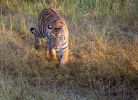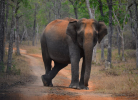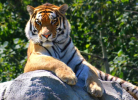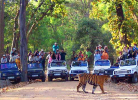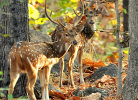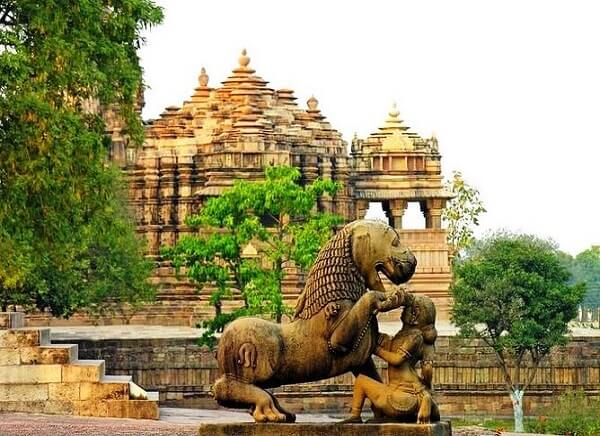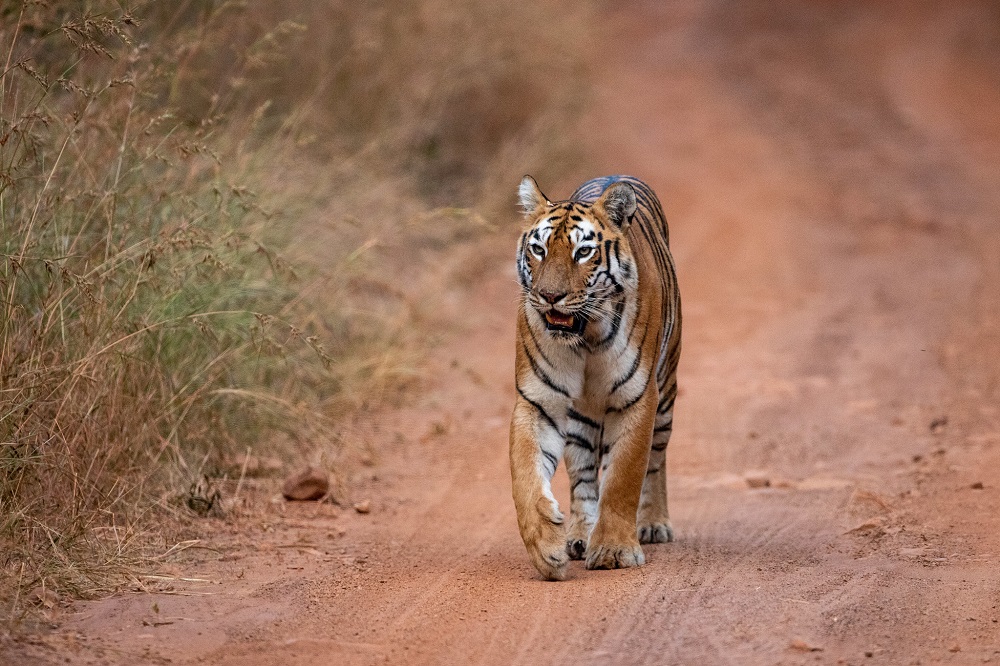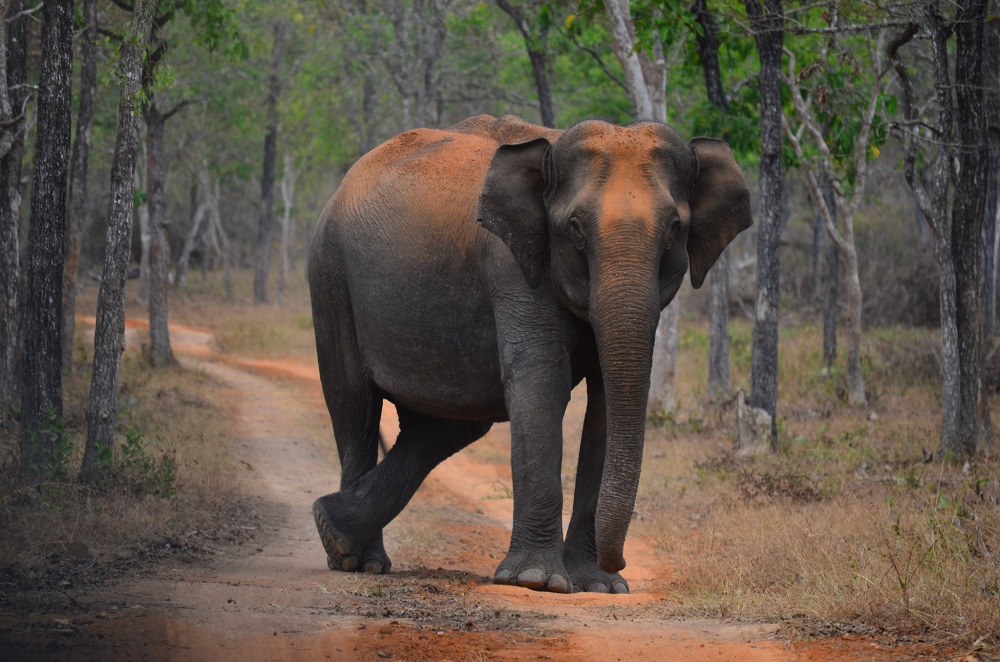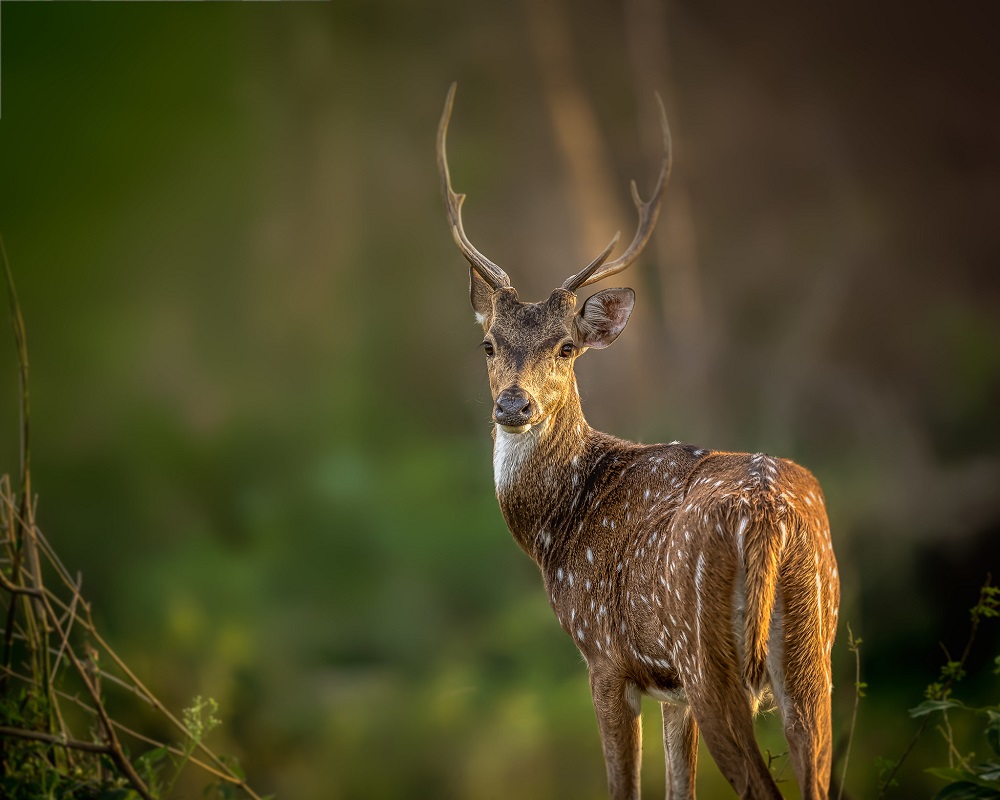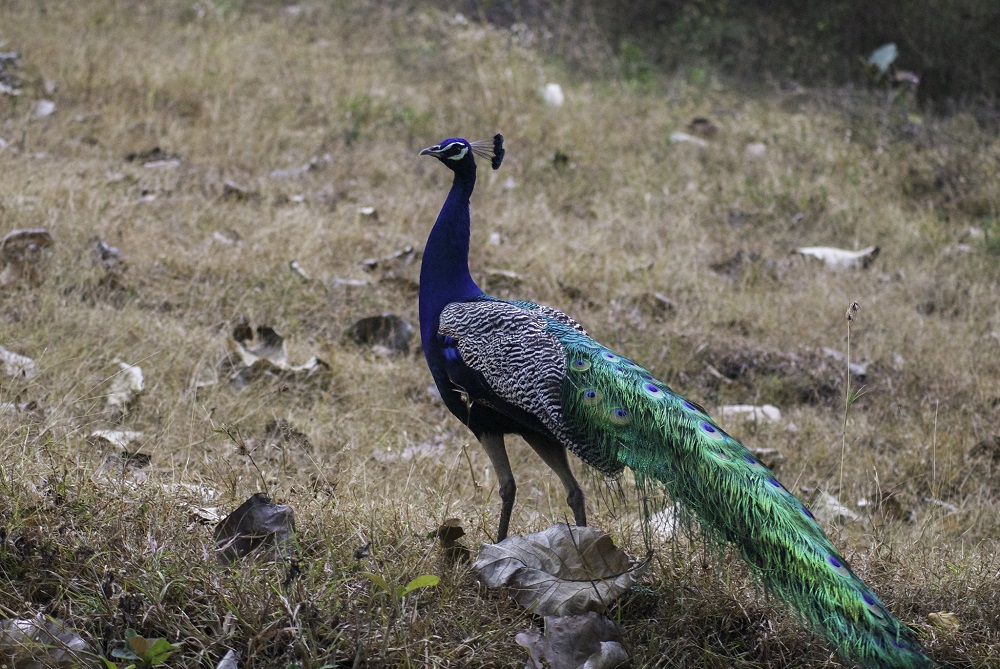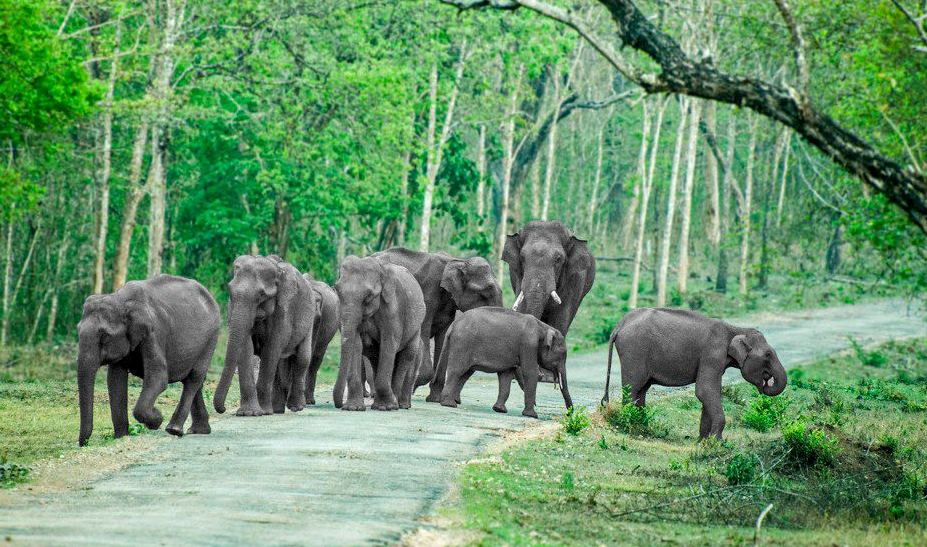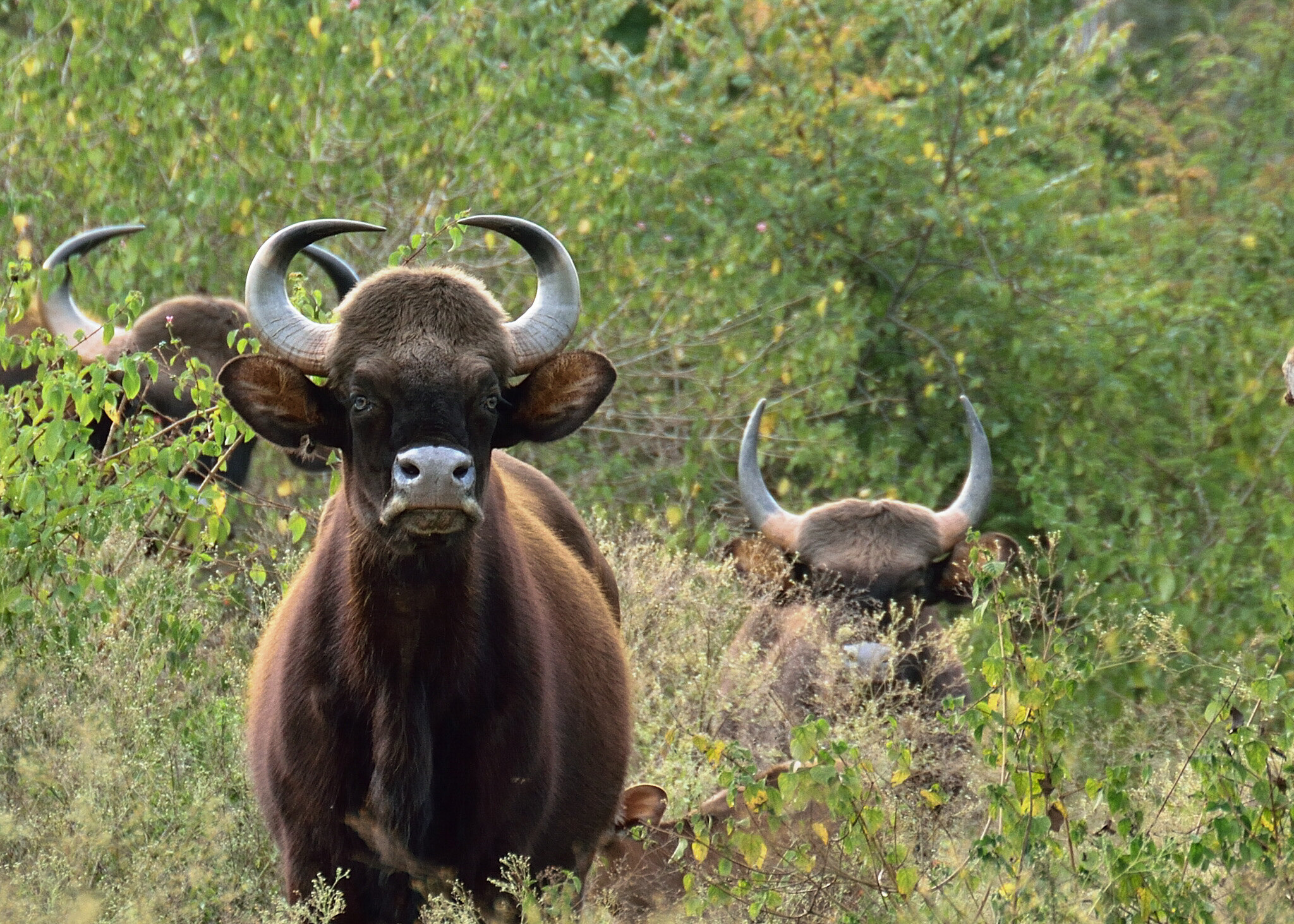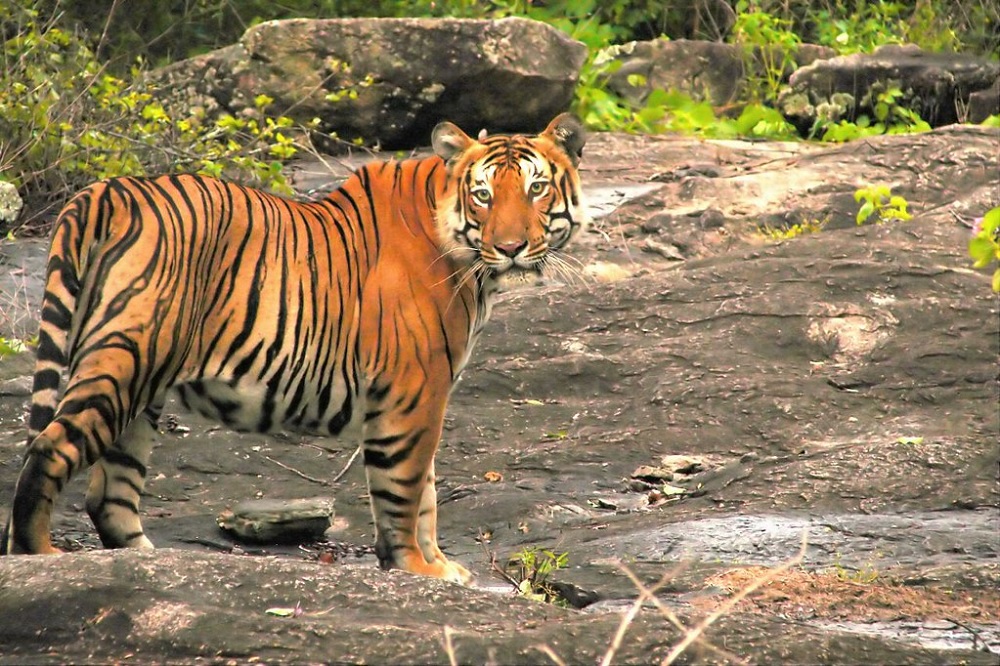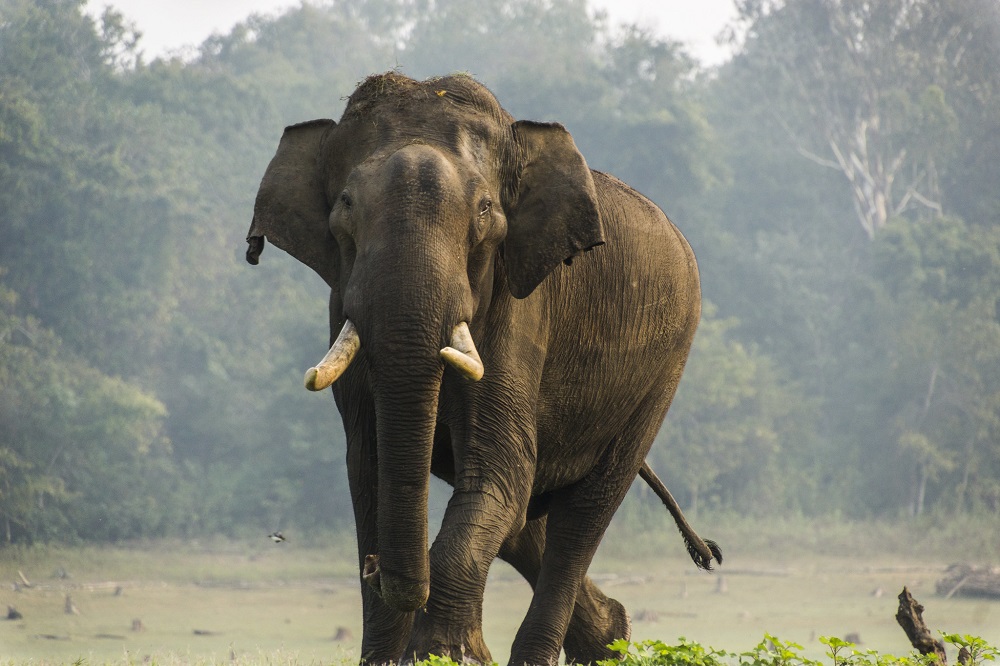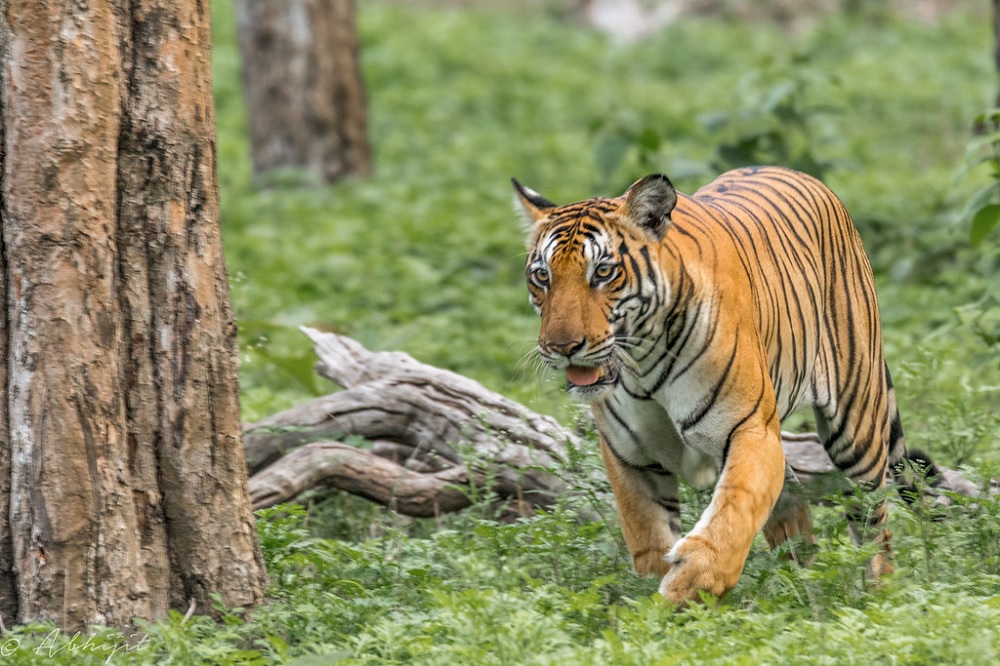Bandhavgarh National Park
Bandhavgarh National Park is situated in the Umaria district of Eastern Madhya Pradesh (Central India). It covers an area of 450 Square Kilometers and is known for its spectacular collection of flora and fauna. It is a home to more than 250 species of birds and 22 different species of mammals. The vegetation of Bandhavgarh National Park includes tall grasslands and thick Sal forest
Bandhavgarh National Park has three major zones named - Tala, Bamera and Magdi. Among these the Tala zone attracts more tourists as it offers opportunities of sighting the tiger. The park authorities are now working to develop Magdi Zone by creating more opportunities for the tourists to spot tigers. To increase the opportunity of spotting the royal predators in Magdi zone, elephant shows are also organized.
Though, the park is majorly inhabited by white tigers but it also provides shelter to several other Indian wild species like Cheetals, Langurs, Bison and Sambars. The beautiful woods of Bandhavgarh attract numerous tourists from all over the world. The park remains at its best during spring season. The ideal time to explore wildlife in the park is from January to March.
Bandhavgarh has no direct air connectivity. The nearest airport to Bandhavgarh is at Jabalpur, one of the popular cities of India in Madhya Pradesh. Through airways one can reach Bandhavgarh quickly from New Delhi. On arriving at Jabalpur, one has to hire a taxi to Umaria.
Flora of Bandhavgarh National Park
The panoramic view of Bandhavgarh National Park’s landscape includes cliffs, 32 hills, plateaus and meadows. The lower slopes of the region have forests of Sal forest and Bamboo. The higher hills of the park include high grasslands which are considered as the main vegetation of Bandhavgarh jungle.
The fertile riverbanks of Bandhavgarh have lush vegetation with 300 species of flora. Some of the major species are as follows:
- Saj (Terminalia tomentosa)
- Tendu, Arjun (Terminalia arjuna)
- Dhaora (Anogeissus latifolia)
- Palas (Butea monosperma)
- Amla (Emblica officinalis)
- Jamun (Blackberry) (Syzygium Cumini)
- Mango (Mangifera indica)
- Khajur (Phoenix sylvestris)
- Ber (Zizyphus Mauritiana)
- Salai (Boswellia serrata)
- Babul (Accasia nilotica)
- Dhok (Anogeossis pendula)
- Banyan (F icus benghalensis)
- Dhak or Chila (flame of the forest) {Butea monosperma}
- Kadam (Authocephalus cadamba)
- Khair (Accacia catechu)
- Lagerstroemia
- Bamboo
- Boswelia
- Madhuca
- Pterocarpus
The contrasting vegetation of Bandhavgarh National Park forests include:
- Neem (Azadirachta indica)
- Mohua (Madhuca indica)
- Khejda (Prosopis specigera)
- Karel (Capparis decidua)
- Kakera (Flacourtia indica)
Fauna of Bandhavgarh National Park
Bandhavgarh National Park is mostly visited by the tourists from worldwide for the white royal predators. It also has a huge list of other animals and birds that can be spotted in the park which includes Bengal Tigers, Nilgai, Sambar, Barking Deer, Gaur, Chausingha, Wild Boar, Chinkara, Leopards, Sloth Bear, Striped Hyena, the Asiatic Jackal, Bengal Fox, Ratel, Grey Mongoose, Jungle Cat, Spotted Deer, Dhole, Palm Squirrel, Small Indian Civet, Little Grebe and Bandicoot Rat.
The species of birds found abundantly are Egret, Sarus Crane, Adjutant, Crested Serpent Eagle, Black Kite, Black Vulture, Common Peafowl, Egyptian Vulture, Dove, Red Jungle Fowl, Indian Roller and Parakeet. Grey Hornbill, White Breasted Kingfisher and Common Teals are some other species of birds spotted in the park.
Reptiles like Cobra, Viper, Krait, Rat Snake, Turtle, Python and varied species of lizard including Varanus are also found in the park.
Suggested Tour Package : 14 Days - Wildlife Safari India
Climate of Bandhavgarh
Bandhavgarh National Park enjoys North Indian Monsoonal climate. The major seasons of Bandhavgarh are winters, summers and rains. The mercury drops to 2°C during winters and rises up to 45°C in summers. During monsoons, it receives an average rainfall of 1133 mm. The southern cyclones are the reason for some rains in this region. It occurs between the November and February.
Best Time to Visit Bandhavgarh
To enjoy the fullest in Bandhavgarh National Park, plan your wildlife holiday tour keeping in mind the weather of that region.
The weather remains pleasant and favorable from November to March and is considered as the best time to visit the park, if you don’t want to travel during summer. But if you want to spot the Royal Bengal Tigers stalking inside the park, you should visit there during the hottest month of April, May and June.
Wildlife Safari Timings
The park has 4 major divisions or zones named Tala, Magadhi, Khitauli and Panpatha. Tourists can enjoy jeep or canter safari in Bandhavgarh National Park within a specified time. There are two shifts of safari conducted every day. The jeep safari carries 6 tourists at a time while the canter safari allows 16 tourists. The number of vehicles allowed to enter the park during each shift is-Tala Zone (25), Magadhi Zone (66), Khitauli Zone (35) and Panpatha Zone (35).
The safari entry and exit timings changes according to the change of seasons. Jeeps carrying groups of tourists or individuals along with naturalists are allowed to enter the park. In winters, the entry time is stretched a little in the morning and exit time is reduced.
Visitors can enjoy safari in Bandhavgarh National Park from 15th October to 30th June. One can take the morning safari from 06:30 Hrs to 11:00 Hrs or the evening shift from 14:30 Hrs to 17:30 Hrs in 15th October to 15th Feb. The safari shift timings from 16th Feb to 31st March are 06:00 Hrs to 11:00 Hrs (Morning) & 15:00 Hrs to 18:00 Hrs (Evening). April to 30th June the safari is scheduled from 05:30 Hrs to 10:00 Hrs (Morning) & 16:00 Hrs to 19:00 Hrs (Evening).
Important Note:
- On every Wednesday, the Evening Safari shift remains closed for visitors at Bandhavgarh National Park.
- During Holi (celebrated in the month of March), both the safari shifts remains closed.
How to Reach Bandhavgarh
To reach Bandhavgarh one can opt for the available options as per their convenience.
Airways : Umaria doesn’t have any airport of its own. The nearest airports to Bandhavgarh National Park at Umaria are Khajuraho airport and Jabalpur airport that connects the major cities to Umaria. These airports have access to international and domestic flights providing opportunities for tourists from all over the world to visit Bandhavgarh National Park.Railways : The nearest railhead to Bandhavgarh National Park is Umaria railway station located at a distance of 35 Km and takes 45 minutes to reach. The next nearest railway station to the park is Katni Railway station, which is at a distance of 100 km and takes 2 hours to reach there.
Roadways : Bandhavgarh National Park has good road connectivity. It is connected with the major cities of the world and the country as Madhya Pradesh State Transport operates buses from Rewa, Satna, Katni and Umaria.
One can also hire cars or cabs from Umaria, Katni, Satna and Bilaspur. During the road trip, which begins from Khajuraho to Bandhavgarh provides opportunities to get the glimpses of the Ken River and the crocodile sanctuary making the journey interesting. You can then pass through the diamond mining industry (Panna and Satna) and the cliffs of Vindhyachal to Bandhavgarh.
A short bus journey from Jabalpur will take you to the entrance of the park/ Tala.
Distance between the Major Cities and Bandhavgarh National Park
Best Places to Stay in Bandhavgarh National Park
During your wildlife tour to Bandhavgarh National Park, you can have comfortable stay in the following luxurious hotels, lodges and resorts:
- Mahua Kothi
- Syna Tiger Resort
- Tree House Hideaway Resort
- Kings Lodge
- Bandhav Vilas
- Infinity Bandhavgarh Wilderness
- Bandhavgarh Meadows
- Maharaja Royal Retreats
- Tiger Den Resort
- Tiger Lagoon
- Nature Heritage Resort
- Bandhavgarh Jungle Lodge
- Tiger Trails Resort
Bandhavgarh Fort
This fort is located on a plateau of 4 sq. km at a height of 811 meters, at the top of the hill. It was built in 10th century. There are some other monuments and man-made water holes too. The fort is located in the Tala zone of Bandhavgarh and can be seen from every corner of the forest. Since 2nd Century, Bandhavgarh has been ruled by several dynasties like Maurya, Magh, Sengar, Vakataka, Baghels and Kalchuri.
During 9th century, Bandhavgarh was ruled by Haihay Kalchuri and was considered as the golden period of the region. The fort is believed to be of the Kalchuri dynasty and this period was considered as the golden period of this region. The fort was then invaded by the Baghel Rajputs in the 13th Century. This dynasty derived from Gujarat and made Bandhavgarh as their capital.
Later in 1617, Baghel King, Vikramaditya Singh left Bandhavgarh fort as they were compelled by the Mughals and established their new capital at Rewa, located at 130 km away from Bandhavgarh. Since then, the wildlife of the region developed.
After knowing this, the Baghel Kings prohibited cutting of trees and hunting by outsiders within Bandhavgarh as they declared it to be their personal hunting reserve. The Baghels had control over Bandhavgarh till 1968 even after shifting to Rewa. The royal family used to visit the forest at regular intervals for hunting. During their visit, they used to stay in a building called Maharaja Kothi which has been converted into a hotel named "Maharaja Royal Retreat".
Conservation History of Bandhavgarh
Bandhavgarh National Park has a fort located in its center atop the hill of Bandhavgarh, where the local rulers used to sit before they shifted to Rewa, in 1617 A.D.
Bandhavgarh became isolated after the capital moved to Rewa. It was then turned into a forest and considered as a hunting reserve for the royal family. The maharajas used to kill 109 tigers as it was considered to be lucky. By 1914 one of the Maharajas of this region, Maharaja Venkat Raman Singh shot 111 tigers.
After Independence, in 1947 Rewa was merged with Madhya Pradesh and Bandhavgarh came under the administration of Madhya Pradesh. But still the royal family had the rights for hunting and no measures for conservation of wildlife and forests were taken. Therefore, resulting in the process of degradation of the forests and species of Indian wildlife.
In 1968, an area of 105 sq km of the forest was declared a National Park. Maharaja Martand Singh of Rewa was touched by forest’s destruction because of improper control and inadequate measures. Since then poaching was restricted. Water holes and small dams were built and the grazing of local cattle was prohibited, resulting in an increase in the Indian wildlife population including tigers.
Later in 1982, the area of the park was increased to 448 sq km to shelter the increasing number of tigers and varied species of Indian wildlife. In 1993, the Project Tiger extended its area to 694 sq. km. including Bandhavgarh, along with a buffer area of 437 sq km. Therefore, the whole area was declared as Tiger Reserve of Bandhavgarh.
In 2001, the density of tigers in Bandhavgarh National Park became high. An area of 105 sq km tourist zone consisted of 22 Tigers (a tiger for per 4.77 sq km). The caves within the park worked as nursery for the cubs hence protecting them. Thus, it helped to preserve the wildlife of Bandhavgarh. If one cannot get the glimpse of a tiger in this park he is considered unlucky!


